'Lorraine' Engraved Artillery Shell Casing

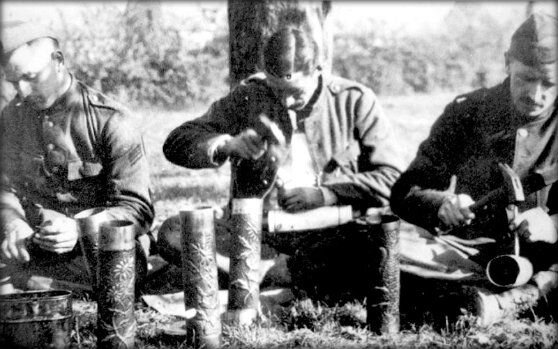
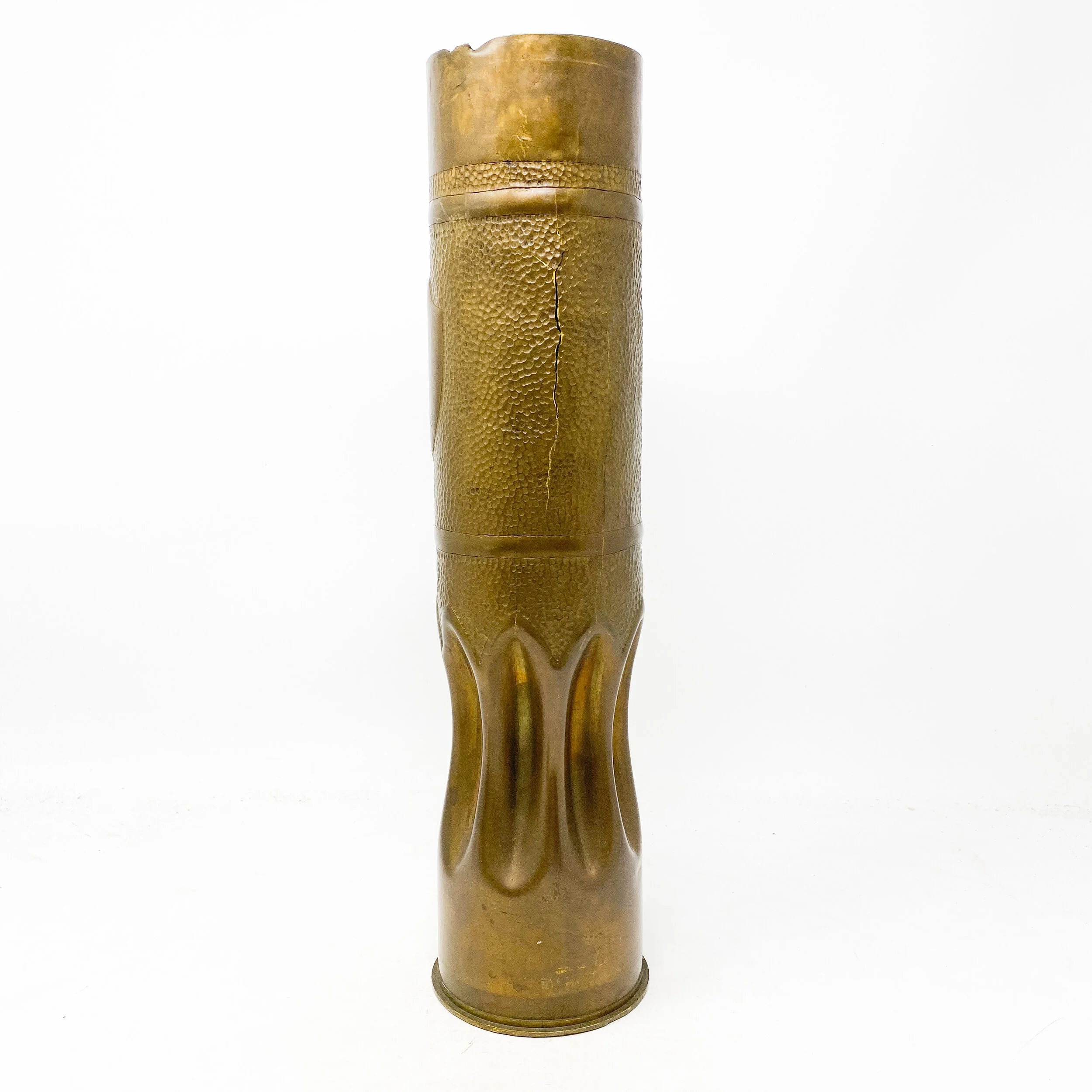
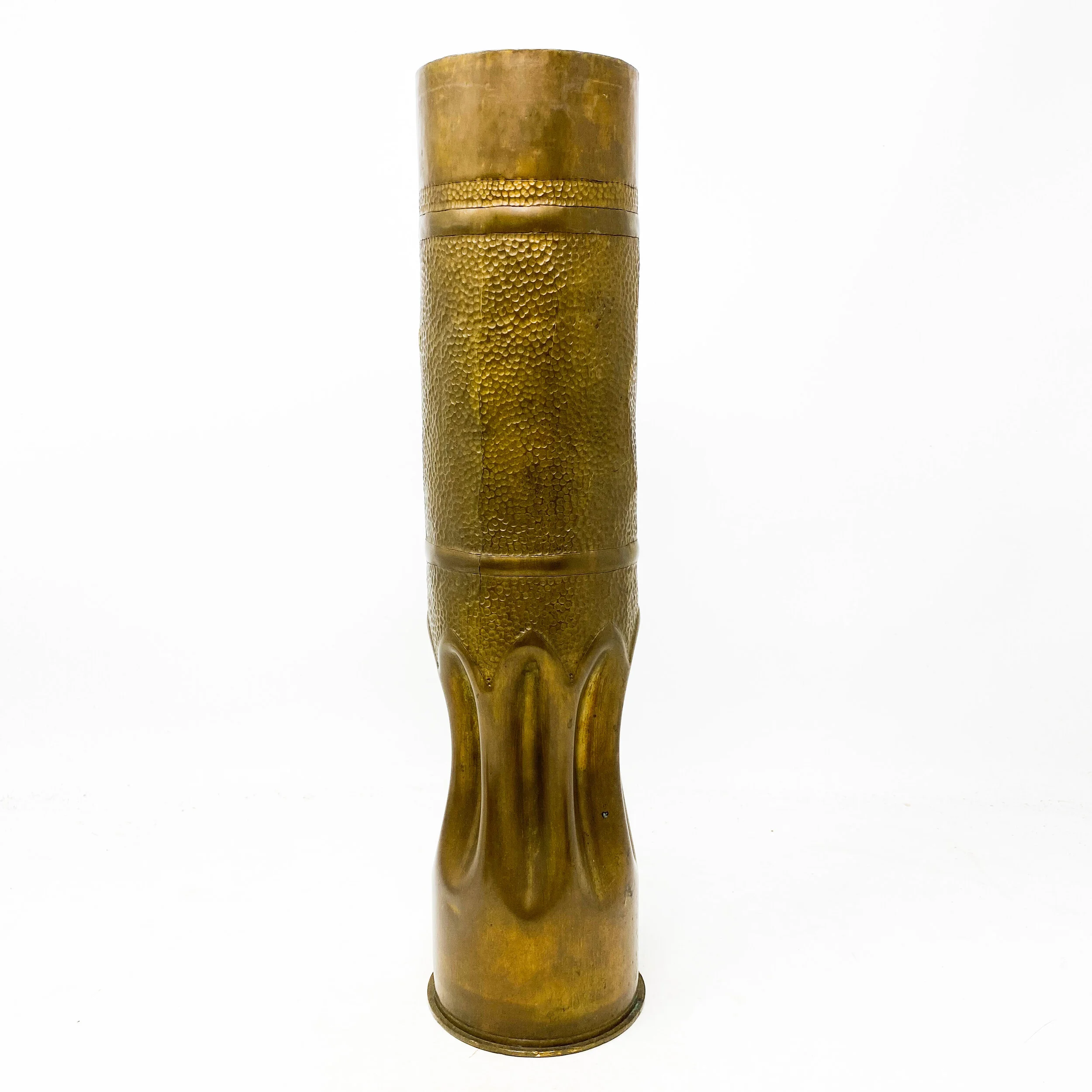

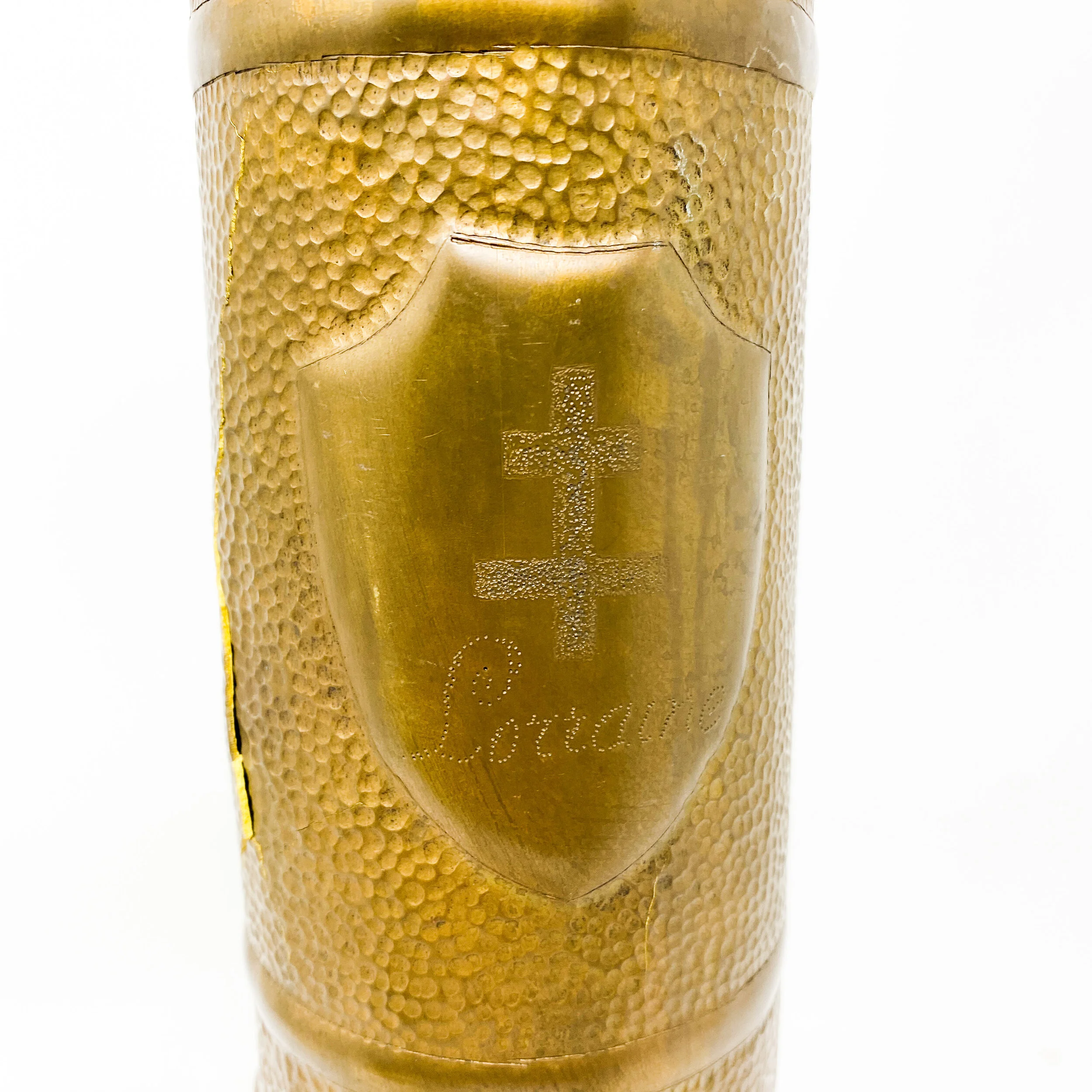
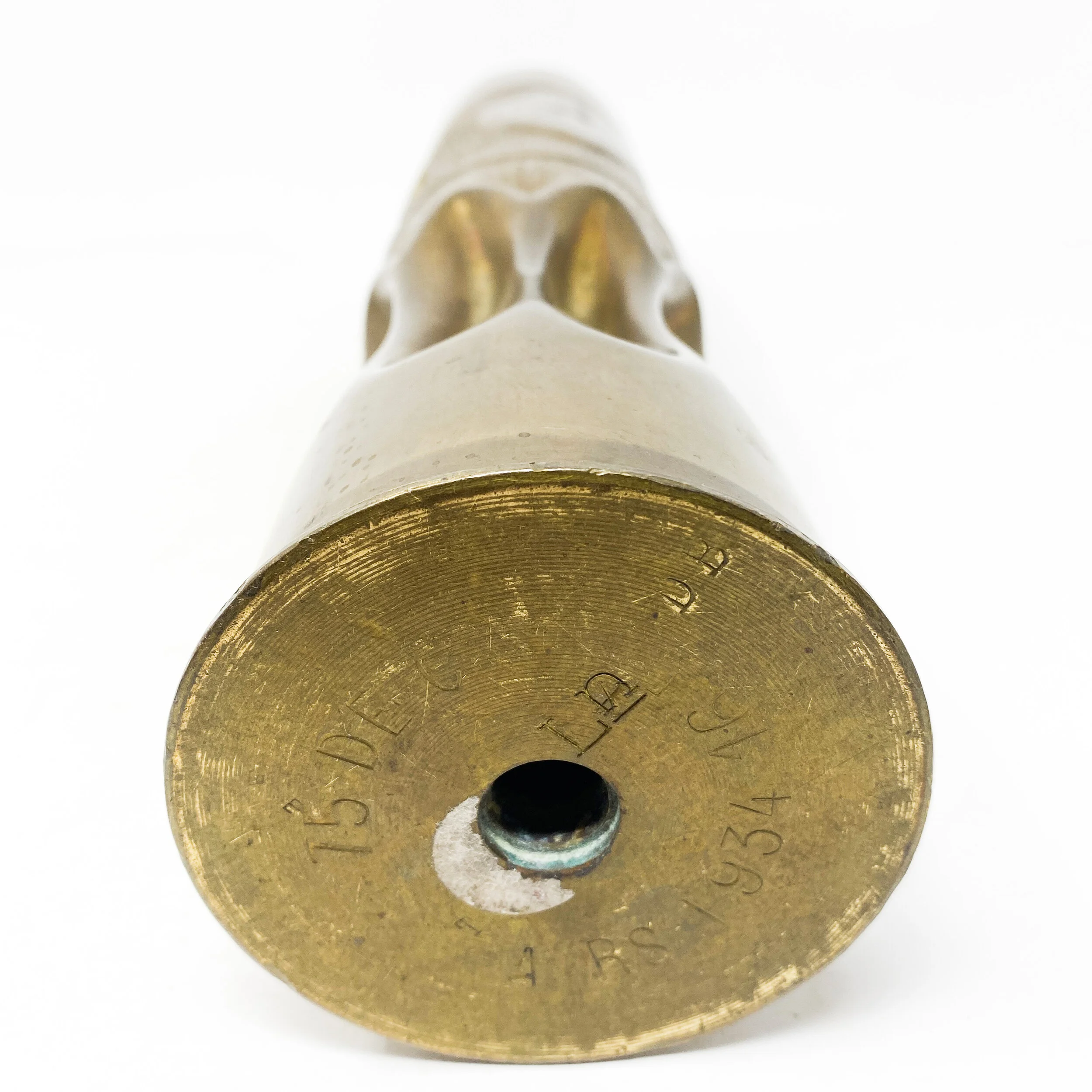
'Lorraine' Engraved Artillery Shell Casing
Measures: 13 inches
Inscriptions: ‘ Lorraine’
History of Trench Art:
During leisure hours at the front, skilled soldiers created trench art from the remnants of war such as discarded bullets and artillery shell casings. Many of these remnant of war were done with their own equipment and leftover items, but also by items captured and left by enemy soldiers. Trench art objects are holders of soldiers’ memories and reminders of the conflict they faced. Made out of recycled war refuse such as shell casings, spent bullets or whatever came to hand, they open a window to the past. They tell us things like where soldiers went and what their surroundings were like. They also give hints about soldiers’ thoughts and actions. Something as simple and functional as a matchbox cover can provide a map of a soldier’s movements while other, more decorative examples, show a desire to find and create beauty, to camouflage war in art. Trench art can be made of any number of things. Many objects were made out of the scraps created by war. This included ammunition shell cases, bullet casings, shrapnel, and pieces of destroyed buildings or downed planes. These materials would all have been readily available in the war zones to soldiers, their prisoners of war and to civilians still in the area.
Canon de 75 modèle 1897:
The French 75 was designed as an anti-personnel weapon system for delivering large volumes of time-fused shrapnel shells on enemy troops advancing in the open. After 1915 and the onset of trench warfare, other types of battlefield missions demanding impact-detonated high-explosive shells prevailed. By 1918 the 75s became the main agents of delivery for toxic gas shells. The 75s also became widely used as truck mounted anti-aircraft artillery. They were also the main armament of the Saint-Chamond tank in 1918.